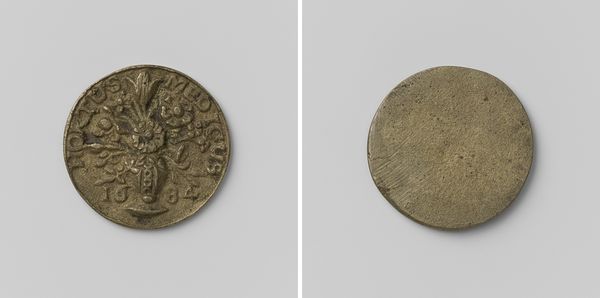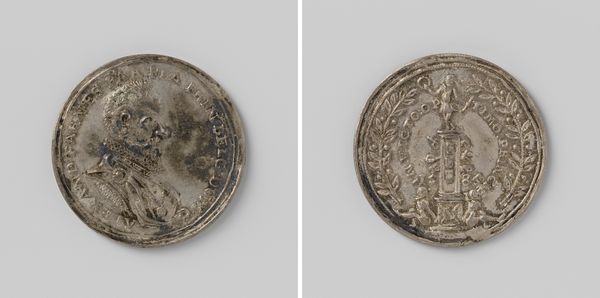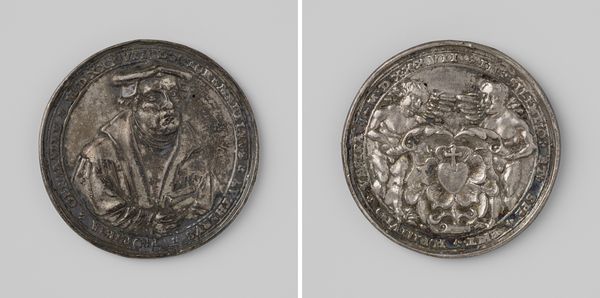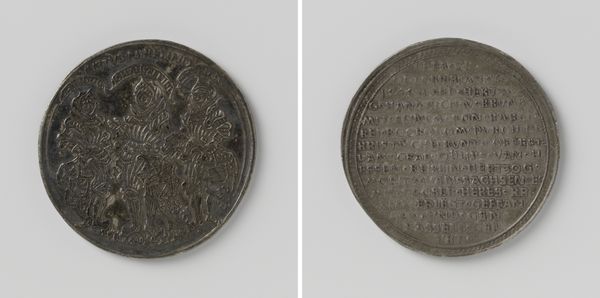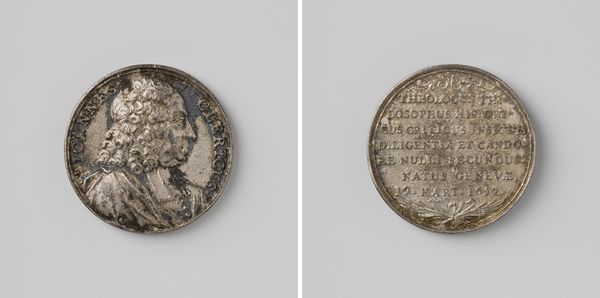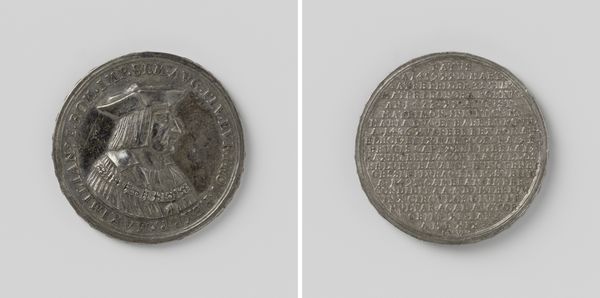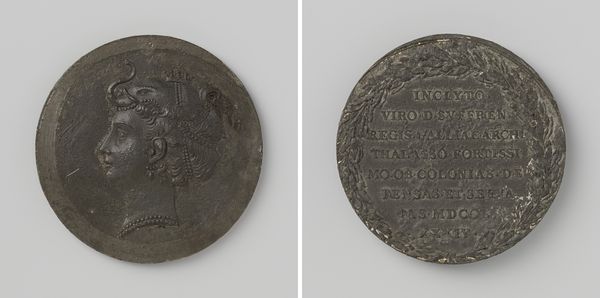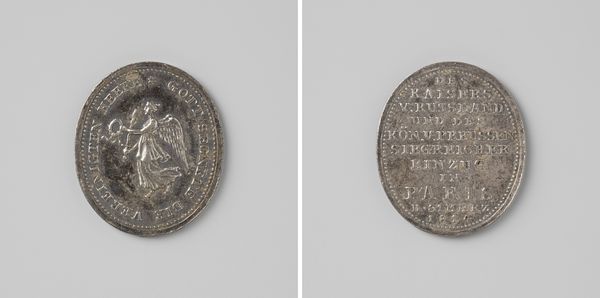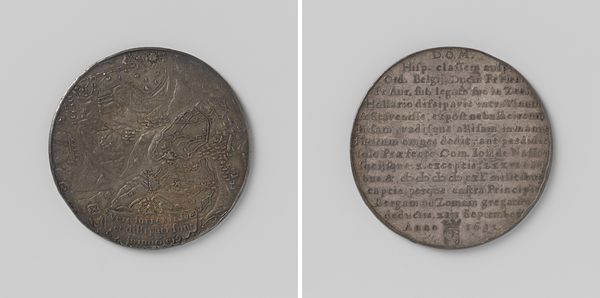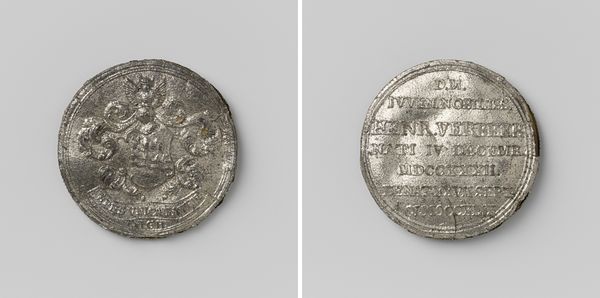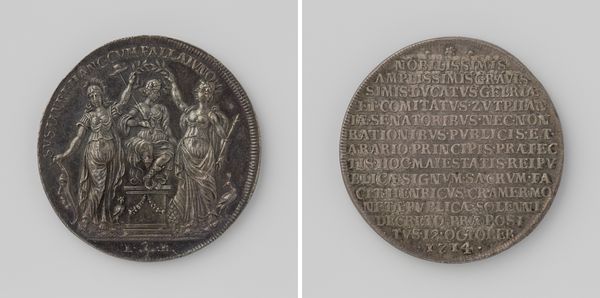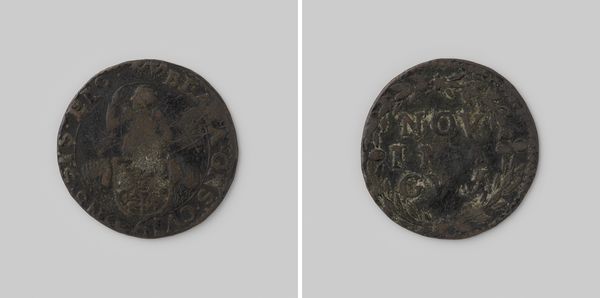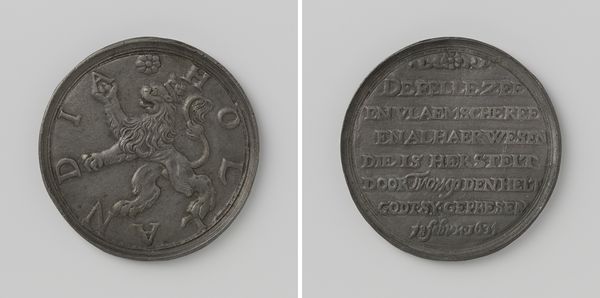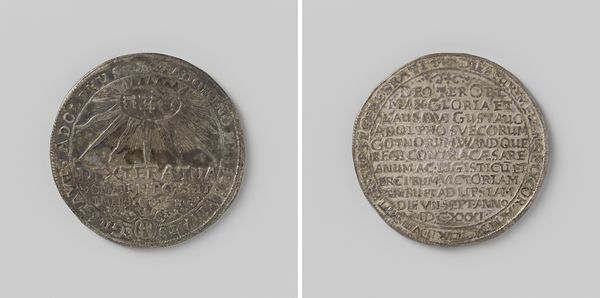
Overwinning bij St. Quentin en inname van die stad, ter ere van Filips II van Spanje Possibly 1557 - 1558
0:00
0:00
metal, relief
#
portrait
#
metal
#
relief
#
11_renaissance
#
stoneware
#
history-painting
Dimensions: diameter 3.5 cm, weight 14.96 gr
Copyright: Rijks Museum: Open Domain
Editor: Here we have a metal relief sculpture from around 1557-1558 by Jacques Jonghelinck, titled "Overwinning bij St. Quentin en inname van die stad, ter ere van Filips II van Spanje" or "Victory at St. Quentin and the Capture of that City, in Honor of Philip II of Spain." Looking at it, it strikes me as… weighty. It feels dense, both physically and symbolically. What catches your eye about this piece? Curator: Oh, I adore the sheer audacity of turning propaganda into art, or perhaps, art into propaganda! Jonghelinck’s captured something more than just a battle; he's bottled a moment of supreme power, doesn't he? Look at Philip's profile, wreathed in laurel. There's a deliberate stoicism, an almost divine right etched into the metal itself. Does the inscription not whisper tales of empires won and destinies fulfilled? Editor: It definitely gives that impression! Is the fact that it's a relief important to its message? It almost feels like it’s trying to escape the bounds of the coin. Curator: Precisely! The relief, it is crucial! By embossing the figures and text, Jonghelinck’s creating something tangible, a touchstone to the glory of Philip II. It isn’t a mere representation; it's a physical assertion of dominance, don’t you think? Makes you wonder how many hands held this medal, heads bowed slightly, absorbing the implied power, no? Editor: Definitely food for thought. It makes you realize how an artwork can be both commemorative and assertive, immortalizing a specific moment in time while also proclaiming power and authority. Curator: Right? And isn’t it fantastic when a little coin unlocks a vast history?
Comments
No comments
Be the first to comment and join the conversation on the ultimate creative platform.
